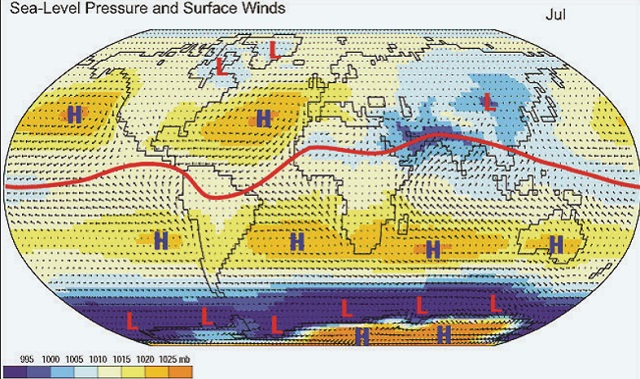
How combination of sun, pressure, and wind affects weather around you
Kampala, Uganda | RONALD MUSOKE | June and July have been chilly with days having an unbearable mix of very cold weather, dry winds and a hazy mist in parts of southern Uganda, including Kampala. Meanwhile, northern Uganda, especially the central northern districts, has experienced rainfall.
Recent prolonged dry spells have led people; especially farmers,to fumble and panic at the slightest hint of weather cooling, which they associate with the onset of rains. So even farming communities in the southern sector of the country, where July is known for being a harvest season, have been asking whether the weather pattern has changed again and whether they should immediately get back in their gardens, plough, and plant crops.
And as has become the norm too, some experts have been attributing the “unusual weather conditions” to climate change.
According to Dr. Mary Goretti Kitutu, the minister of state for Water and Environment; “We are experiencing climatic changes and as a result our weather has become erratic and given that Uganda is a tropical country, weather systems can build up very quickly; and that is why we are being affected this way.”
She told The Independent that since Uganda is a tropical country, weather systems tend to build up very quickly and that is why the southern sector—a sizeable chunk of surface area below the equator—is being affected by the chilly weather.
Some other experts The Independent has talked to, however, were not so firm in describing the June-July weather as “unusual’.
Michael Ssekaayi Mbogga, a lecturer from Makerere University’s Centre for Climate Change Research and Innovations says the current cold weather has nothing to do with climate change.
“These are normal seasonal temperatures expected in East Africa; unless people have a short term memory, the months of June and July are usually the coldest months in Uganda,” he says, “It is just that climate change is hyped; the current temperatures are nothing extraordinary.”
Godfrey Mujuni, the Manager, Data Centre at the Uganda National Meteorological Authority (UNMA) also told The Independent that local meteorologists have always recorded relatively low temperatures in July. Mujuni says, the dip in temperature begins in June and peaks in July.
“This has always been the case; it is just that people rarely follow what goes on in their environment. For us, we know that we have always measured low temperatures in the months of late June, July and the first few days of August,” he said.
Mujuni says, since July is normally dry, people have tended to associate it with hot temperatures. However, the truth is that for most of southern Uganda, it is dry and very cold especially in the early morning although at times it goes on the entire day.
“We normally call this our winter,” Mujuni told The Independent.
He says this is not unique to Uganda. In Kenya, and particularly Nairobi, the same happens. He says the wintry conditions start in May, June and peak in July. Mujuni says temperatures can sometimes drop to 5ᵒC.
What causes the chills?
Mujuni says the low temperatures experienced around this time, are as a result of southwesterly trade winds that normally come from southern Africa and blow northwards towards the East African region. These winds more often come along with cold air and deposit it into Kenya and Uganda, he says.
Mujuni says the cold air winds blow towards the East African region because the pressure systems in the southern hemisphere become stronger than those in the northern hemisphere around June to August. There are two major pressure systems from the southern tip of Africa. One system is called the St. Helena pressure system from the Atlantic Ocean and another the Mascarene from the Indian Ocean. These two push cold air upwards from southern Africa up north towards East Africa.
“Remember,” Mujuni said, “It is winter in the southern hemisphere and countries such as South Africa, Zimbabwe, Botswana and Namibia are experiencing winter right now.”
“This is the reason why it is very cold right now in Uganda and some parts of Kenya like Nairobi.”
 The Independent Uganda: You get the Truth we Pay the Price
The Independent Uganda: You get the Truth we Pay the Price




What is unusual with July weather is the rain received in some parts around lake Victoria, which is higher than normal. Otherwise temperatures are within range. What does not make it strange is that the seasonal forecasts from the Uganda National Meteorological Authority (UNMA) that came out earlier this year, already pointed us in this direction. We ought to have been prepared.
The message to the public should be that, we cannot for sure know how climate change will unfold. Projections indicate increase in temperatures with unchanged, slightly reduced or increased rainfall totals. Rainfall totals are meaningless to rain-fed agriculture which also depends on the reliability of that rainfall, to come at the right time and in the right amounts. And we know this is not normally the case. Thus water harvesting, micro or even mega irrigation projects are no longer luxuries for the rich countries. These coupled with sound land management, value addition for farm produce and effective and efficient information and knowledge dissemination are options that will help our communities improve production and productivity as well as deal with impacts of climate change.